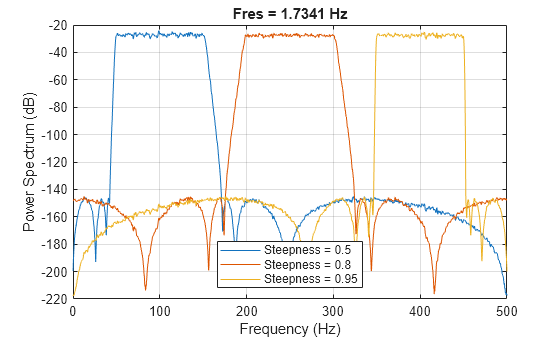bandpass
Bandpass-filter signals
Syntax
Description
y = bandpass(x,wpass)x using a bandpass filter with a
passband frequency range specified by the two-element vector
wpass and expressed in normalized units of
π rad/sample. bandpass uses a
minimum-order filter with a stopband attenuation of 60 dB and compensates for
the delay introduced by the filter. If x is a matrix, the
function filters each column independently.
y = bandpass(___,Name=Value)
[
also returns the y,d] = bandpass(___)digitalFilter object
d used to filter the input.
bandpass(___) with no output arguments plots
the input signal and overlays the filtered signal.
Examples
Input Arguments
Name-Value Arguments
Output Arguments
More About
Version History
Introduced in R2018a
![Figure contains 2 axes objects. Axes object 1 with title Bandpass Filtering (Fpass = [100 200] Hz), xlabel Time (s) contains 2 objects of type line. These objects represent Original, Filtered. Axes object 2 with xlabel Frequency (Hz), ylabel Power Spectrum (dB) contains 2 objects of type line. These objects represent Original, Filtered.](../../examples/signal/win64/BandpassFilteringOfTonesExample_01.png)

![Figure contains 2 axes objects. Axes object 1 with title Bandpass Filtering (Fpass = [230 450] Hz), xlabel Time (s) contains 2 objects of type line. These objects represent Original, Filtered. Axes object 2 with xlabel Frequency (kHz), ylabel Power Spectrum (dB) contains 2 objects of type line. These objects represent Original, Filtered.](../../examples/signal/win64/BandpassFilteringOfMusicalSignalExample_02.png)




